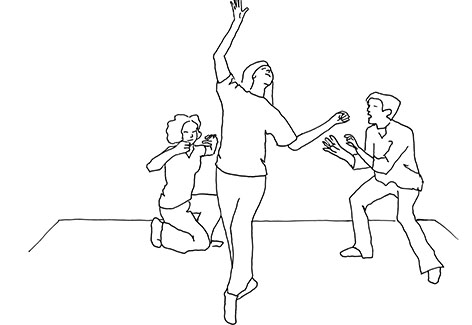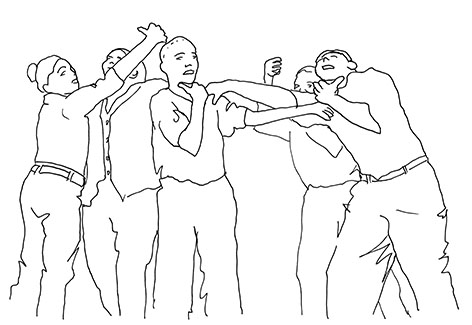What?
When?
Before or after reading
Why?
This strategy draws on cooperative learning and kinesthetic intelligence to enhance explicit vocabulary instruction. The novelty of the process increases student engagement and memory of vocabulary words. The strategy also serves as a formative assessment.
How?
- Choose vocabulary words from the central text and share the list with the class.
- Divide the class into heterogeneous groups (up to four students per group) and assign each a word or set of words. Make sure each group gets different words. Groups should not see the words other groups were assigned.
- Instruct groups to use common affixes and roots in order to determine the word’s meaning. Then, provide groups with dictionaries in order for them to clarify its meaning and part of speech.
- Either provide groups with student-friendly definitions or have them look up definitions.
- Explain to students they must plan a tableau for each assigned word according to these guidelines:
- All group members must be a part of every tableau;
- Group members should pose at various heights (some standing, others sitting/crouching/kneeling, others lying on the floor);
- Group members cannot use sound or movement; and
- Group members should use their entire bodies (hands, legs and facial expressions).
- One by one, each group should perform for the class, holding each tableau for at least 30 seconds. Ask students in the audience to review their vocabulary lists and deduce which word the group is performing. Have students record their answers and turn in their answer sheets.
- Use a rubric to score the performing group’s scene. Rubrics should evaluate both the tableau(x) and the group’s collaboration.
- If possible, photograph each vocabulary tableau and post it in the classroom. Consider making the photographs part of your word wall.
To help students acquire and use grade-appropriate vocabulary, have them complete Vocabulary Tableaux throughout the year.
Connection to anti-bias education
Vocabulary tableaux create student-centered teaching and learning experiences. Students work with others to synthesize and express their understanding of words. This strategy supports an inclusive educational environment.


